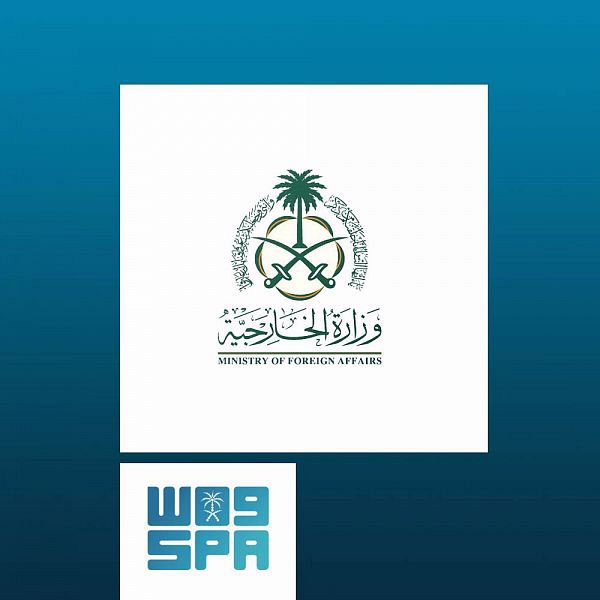
Torrential rains have destroyed homes, damaged roads and washed away bridges in Sindh and Balochistan
Authorities are accused of failing to adequately prepare flood defenses despite forecasts of extreme weather
KARACHI, Sindh / QUETTA, Balochistan: Torrential monsoon rains and resultant flooding have caused widespread death and destruction in Pakistan’s Sindh and Balochistan provinces. As of Monday, more than 600 lives had been lost and 1.5 million people displaced in the two worst-hit regions.
The downpours have killed at least 1,136 people in Pakistan since the onset of the monsoon season, according to the National Disaster Management Authority, with Sindh and Balochistan accounting for 646 of the total fatalities since mid-June.
In Sindh, 402 people have died, while the official figure for Balochistan is 244. The floodwaters are reported to have damaged 3,328 kilometers of roads and washed away nearly 80 bridges in the two provinces.
In Sindh, rains have partially or fully damaged 43,874 houses, while at least a further 61,000 homes have been damaged in Balochistan. These figures are conservative estimates as thousands of villages in the two provinces are either inaccessible or authorities have yet to reach them.
“Almost a month has passed since our village was inundated but no one has reached out to us with any help,” Abdul Rehman Narejo, a teacher in Abdullah Narejo village, on the bank of the Indus River in Sindh’s Khairpur district, told Arab News.
“Our children are starving. We sleep in the open out of fear that that roof will fall on us.”
A two-room government school was sheltering more than 50 women and children on Sunday when Arab News visited the village, where many homes have been damaged.
Speaking to Arab News, Murad Ali Shah, the chief minister of Sindh, described the rainfall this season as “unprecedented.”
“The ongoing monsoon rains are unprecedented,” he said. “July has witnessed 308 percent higher, while August has recorded 784 percent above the average rainfall.
“The flooding in Sindh has affected 23 districts and 201 sub-divisions and has caused an estimated damage of PKR550 billion ($2.49 billion).”
Thousands of people living near flood-swollen rivers in Pakistan"s north were ordered to evacuate on August 27 as the death toll from devastating monsoon rains neared 1,000 with no end in sight. (AFP)
He said standing crops of cotton, date, sugarcane, rice, and vegetables on 2,845,046 acres of cultivated land had been destroyed, inflicting an estimated loss of PKR295 million.
On the positive side, Shah said 105,000 tents had been distributed and 750,000 ration bags had been ordered for distribution in Sindh, but the aid was insufficient to cover the 1.67 million people displaced throughout the province.
“To provide relief to over 1.67 million people, Sindh needs immediate help from the international community. We have spoken to diplomats of Saudi Arabia, the UAE, Turkey, and Iran for their assistance,” he said.
Bilawal Bhutto-Zardari, Pakistan’s foreign minister, who last week called off his Europe trip and reached his hometown of Larkana in Sindh, has also appealed to the international community for help in dealing with the “overwhelming” floods.
Saudi Arabia’s KSrelief was the first international charity to step in, sending 100 trucks carrying 950 tons of food items to 17 flood-ravaged districts of Pakistan last week. The consignment included 10,000 food packages. So far three convoys of essential food items have been dispatched.
Humanitarian assistance has also arrived from Turkey, while a flight from the UAE brought more than 3,000 tons of critical aid. At least another 15 flights carrying relief supplies are expected to arrive in Pakistan from the UAE in the coming days.
According to Shah, there was every prospect of more flood damage in Sindh. “The province has not only received record rains, the Indus River is taking more and more water from northern Pakistan, aggravating the situation. The situation is complicated.”
An auto-rickshaw drives past temporary tents of people who fled their flood hit homes set along a road in Sukkur, Sindh province, on August 27, 2022. (AFP)
Shah said more than 550,000 cusecs of water were flowing through the Guddu and Sukkur Barrages that had inundated large areas along the riverbanks and displaced thousands of families.
“More flooding is expected as the Indus, which has been overflowing its banks, is taking more water southward,” said Shah, who has visited around 20 affected districts.
Qasim Soomro, the Sindh parliamentary secretary for health, said the health department was helping people with support from the World Health Organization and other partners.
“But a huge health crisis is looming as the stagnant water in villages will result in all kinds of infectious and water-borne diseases,” Soomro told Arab News. He appealed to non-government organizations to make medical supplies available.
The torrential monsoon rains and floods have exacted a tragic toll, which keeps rising with every passing day.
Volunteers carry relief food bags to load on a truck for flood affected people in Karachi on August 28, 2022. (AFP)
Abdul Wahab Jamali, 37, a resident of Naseer Faqeer Lalani union council, died after he climbed a dune to escape flooding in his village.
Six-year-old Maula Bux, whose family resides in Khairpur, died after his family failed to take him to the hospital despite several attempts.
“He was the only son of my brother, but we couldn’t save him,” Bux’s uncle Asif Ali told Arab News. “My brother is devastated and hasn’t spoken for the last four days.”
The floods in Balochistan are being described as the worst natural calamity in the history of the province since the devastating earthquake of 1935 that destroyed the entire city of Quetta.
Abnormally heavy monsoon rains led to urban and rural flooding in all 34 districts of the province. Balochistan has been cut off from the rest of the country, with mobile networks and gas and electricity supplies suspended in many parts of the province for the past five days.
On Sunday, Shehbaz Sharif, Pakistan’s prime minister, visited the flood-ravaged Jaffarabad district of Balochistan, where he pledged the full support of the federal government to people affected by the natural disaster. Sharif, who described the flood devastation as “horrifying,” announced a PKR10 billion grant for the province.
Floods caused by monsoon rains and melting glaciers have left more than 1,000 dead and displaced millions since mid-June. (AFP)
“The magnitude of destruction and damage in Balochistan is on a very large scale, and the government of Pakistan will assure rehabilitation of people affected by rains and floods,” he told people in Haji Allah Dinu village.
Floodwaters have damaged around 80 percent of crops in Naseerabad division, comprising Naseerabad, Jaffarabad, Jhal Magsi, and Suhbat Pur districts, over the past month.
A few miles away from the spot visited by Sharif, Gul Khatoon, 55, lives with her ailing husband and three daughters in a makeshift tent built from blankets in the Noran Goth area of Osta Muhammad tehsil.
“In this scorching heat, we have no food and clean drinking water. We have set up this camp in front of a collapsed home,” Khatoon told Arab News. “It"s been 12 days, but no government assistance has reached this area. The prime minister should have come here and seen our plight.”
According to the Climate Change Risk Index 2021, Pakistan is among the 10 countries most vulnerable to severe climate change threats. Many experts ask why, despite the alerts issued by the Met Office, the country was unprepared for the deluge that followed the unusually heavy monsoon rains.
Satellite images show the Indus River in Rajanpur, Pakistan, before and after recent major flooding. (AFP)
“In November 2021, the South Asian monsoon alert said that Pakistan would receive more than normal rains in July and August, but the unpreparedness of the government caused massive destruction in all four provinces, including the northern Gilgit-Baltistan,” Afia Aslam, a climate change activist, told Arab News.
“The localities near the water channels in urban and rural areas need to be remodeled because we can no longer skip our responsibility by providing food rations and cash to the people who lost their homes. We have to stop them from planning on new construction near water channels.”
She said the vulnerability to climate change had reached an alarming level, and Pakistan’s rank might further deteriorate on the Climate Change Risk Index 2022.
“The capital of Balochistan, Quetta, and many dry areas received additional rains because of weather changes. The government in the province needs to be more cautious and alert for the winter rainy season.”
Asfand Yar Kakar, Balochistan’s environment and climate change secretary, said the province received unexpectedly heavy rains this season and authorities failed to take action against people"s violation of environmental protection laws.
“We consider small embankments as dams that were not properly designed. The water discharged from poorly constructed dams flowed into various populated areas across the province,” he told Arab News.
KSRelief dispatches a third emergency relief convoy of 100 trucks with emergency aid for Pakistani flood victims, Islamabad, Pakistan, Aug. 22, 2022. (AN Photo)
He said there was a need to map water channels and remove encroachments on waterways in urban areas. For good measure, he said, the Balochistan environment department would issue notices to departments and officials that failed to abide by environmental protection laws.
For 80 percent of the estimated 12.34 million people of Balochistan, agriculture and livestock are their only livelihoods, but the deluge has wreaked havoc. More than 200,000 acres of rice and wheat crops have been destroyed and an estimated 145,936 farm animals were washed away.
According to Arshad Hussain Bugti, the Balochistan livestock and dairy development secretary, the floods have inflicted huge losses as almost the entire rural population of the province used livestock to supplement their incomes.
“Right now, people are sitting on roads with their cattle and our teams have been traveling to all accessible areas to vaccinate animals. But there are many inaccessible areas that cannot be reached until the water level drops,” he told Arab News.
He said those with livestock preferred to live close to rivers and water channels where there were green lands, but now the authorities had made them aware of the reality of climate change and its consequences.










